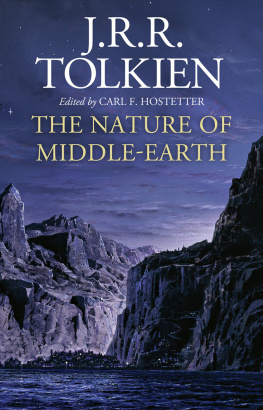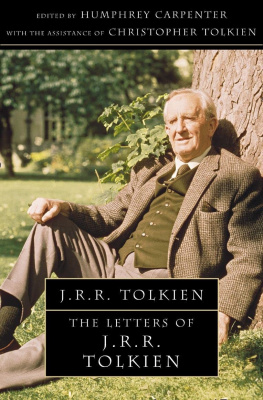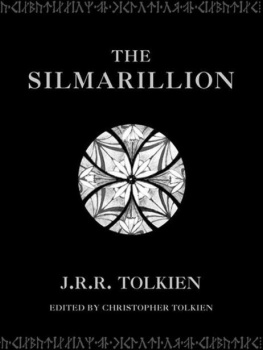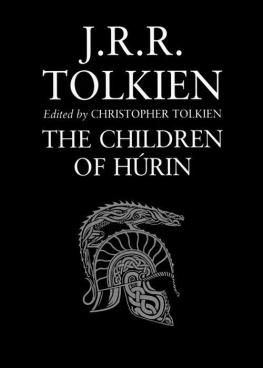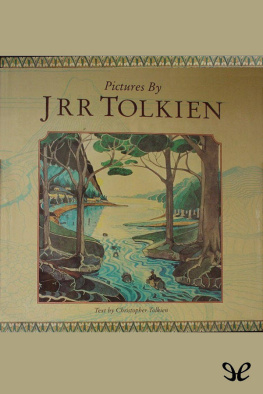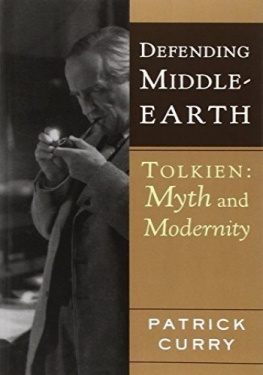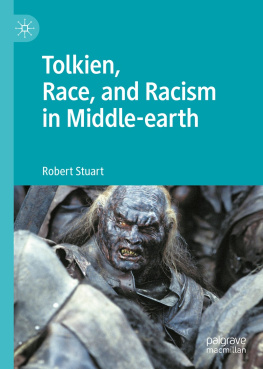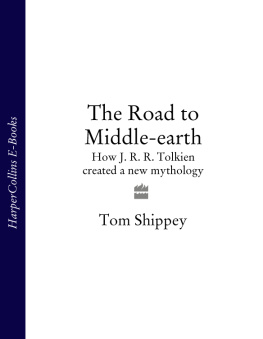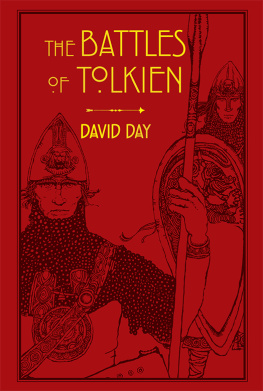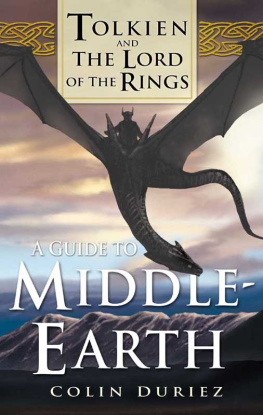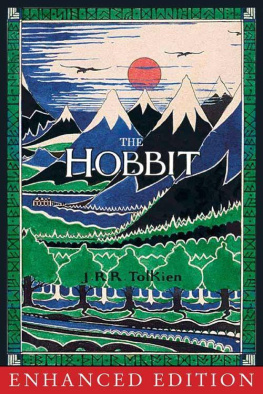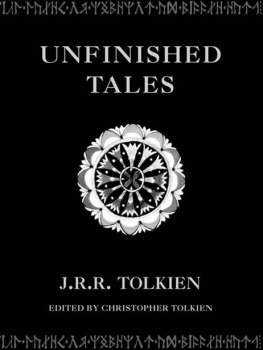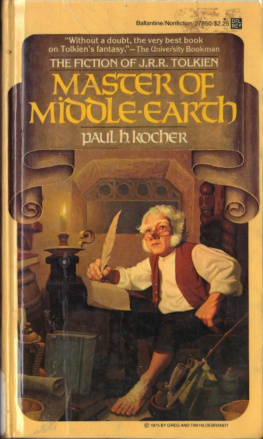J. R. R. Tolkien - The Nature of Middle-earth
Here you can read online J. R. R. Tolkien - The Nature of Middle-earth full text of the book (entire story) in english for free. Download pdf and epub, get meaning, cover and reviews about this ebook. year: 2021, publisher: HarperCollins Publishers, genre: Art. Description of the work, (preface) as well as reviews are available. Best literature library LitArk.com created for fans of good reading and offers a wide selection of genres:
Romance novel
Science fiction
Adventure
Detective
Science
History
Home and family
Prose
Art
Politics
Computer
Non-fiction
Religion
Business
Children
Humor
Choose a favorite category and find really read worthwhile books. Enjoy immersion in the world of imagination, feel the emotions of the characters or learn something new for yourself, make an fascinating discovery.
- Book:The Nature of Middle-earth
- Author:
- Publisher:HarperCollins Publishers
- Genre:
- Year:2021
- Rating:4 / 5
- Favourites:Add to favourites
- Your mark:
- 80
- 1
- 2
- 3
- 4
- 5
The Nature of Middle-earth: summary, description and annotation
We offer to read an annotation, description, summary or preface (depends on what the author of the book "The Nature of Middle-earth" wrote himself). If you haven't found the necessary information about the book — write in the comments, we will try to find it.
The Nature of Middle-earth — read online for free the complete book (whole text) full work
Below is the text of the book, divided by pages. System saving the place of the last page read, allows you to conveniently read the book "The Nature of Middle-earth" online for free, without having to search again every time where you left off. Put a bookmark, and you can go to the page where you finished reading at any time.
Font size:
Interval:
Bookmark:


Late Writings on the Lands, Inhabitants, and Metaphysics of Middle-earth
Edited by Carl F. Hostetter

HarperCollinsPublishers Ltd
1 London Bridge Street,
London SE1 9GF
www.tolkien.co.uk
www.tolkienestate.com
First published by HarperCollinsPublishers Ltd 2021
All texts and materials by J.R.R. Tolkien The Tolkien Estate Limited and The Tolkien Trust 1980, 1993, 1998, 2000, 2001, 2005, 2007, 2009, 2011, 2014, 2021
Introduction, Notes and Commentary Carl F. Hostetter 2021
 and Tolkien are registered trademarks of The Tolkien Estate Limited
and Tolkien are registered trademarks of The Tolkien Estate Limited
Jacket illustration Ted Nasmith 2004
Jacket design HarperCollinsPublishers Ltd 2021
The Tolkien Estate Limited and the editor have asserted their respective moral rights in this work.
A catalogue copy of this book is available from the British Library.
All rights reserved under International and Pan-American Copyright Conventions. By payment of the required fees, you have been granted the non-exclusive, non-transferable right to access and read the text of this eBook on screen. No part of this text may be reproduced, transmitted, downloaded, decompiled, reverse engineered, or stored in or introduced into any information storage and retrieval system, in any form or by any means, whether electronic or mechanical, now known or hereinafter invented, without the express written permission of HarperCollins.
Source ISBN: 9780008387921
Ebook Edition September 2021 ISBN: 9780008387938
Version: 2021-08-17
Enyalien
CHRISTOPHER REUEL TOLKIEN
21 Nov. 1924 16 Jan. 2020
and for
Alex, Aidan, Collin, and Caylee
CONTENTS
In his own foreword to Morgoths Ring (vol. X of The History of Middle-earth), Christopher Tolkien writes of his father that, at the end of the 1950s, and following the publication of The Lord of the Rings:
Meditating long on the world that he had brought into being and was now in part unveiled, he had become absorbed in analytic speculation concerning its underlying postulates. Before he could prepare a new and final Silmarillion he must satisfy the requirements of a coherent theological and metaphysical system, rendered now more complex in its presentation by the supposition of obscure and conflicting elements in its roots and its tradition.
Among the chief structural conceptions of the mythology that he pondered in those years were the myth of Light; the nature of Aman; the immortality (and death) of the Elves; the mode of their reincarnation; the Fall of Men and the length of their early history; the origin of the Orcs; and above all, the power and significance of Melkor-Morgoth, which was enlarged to become the ground and source of the corruption of Arda.
Christopher published a sizeable selection of and from Tolkiens long meditation on his sub-created world in Morgoths Ring and the subsequent two volumes of The History of Middle-earth, but by no means all. The texts in this volume constitute a significant part and a fuller record of his analytic speculation concerning its underlying postulates. They comprise the writings about Middle-earth and Aman that are of a primarily philosophic or speculative nature that were not included in the latter volumes of The History of Middle-earth; as well as those of a descriptive and/or historical nature, chiefly concerning the lands and peoples of Nmenor and Middle-earth, that were not included in Unfinished Tales. These texts and this book are very much of a piece with significant portions of the aforementioned volumes, and will be of greatest interest to those who take particular interest in them.
Like The Lord of the Rings, this book has been long in the making. I have in a sense been working on this book though for long I had no awareness or notion that I was doing so for nearly 25 years. In 1997, in my capacity as one of the authorized editors of his fathers linguistic papers, I received from Christopher Tolkien a bundle of photocopies of various manuscript and typescript materials, which he referred to collectively as late philological essays. As this designation rightly implies, all of the materials in this bundle are concerned to some degree with linguistic matters; but as is often the case in Tolkiens post-Lord of the Rings non-narrative writings, the linguistic matters that occasioned each essay led Tolkien into long (seeming) digressions, either because they explain the historical, cultural, mythological and/or metaphysical situations that various words and phrases reflect; or simply because Tolkien wished to pursue some idea or point that occurred to him at that time. I edited and published three essays from this bundle in the journal Vinyar Tengwar first, sanwe-kenta, a far-ranging essay on thought-communication, in VT 39 in July 1998; Notes on r, a consideration of the inner warning and advising faculty of Incarnates, in VT 41 in July 2000; and The Rivers and Beacon-hills of Gondor, a lengthy discussion of the names and characteristics of those geographic features, in VT 42 in July 2001. (Christopher had in fact prepared an edition of the latter text for inclusion in The Peoples of Middle-earth, but it was cut for lack of space.) A fourth long essay from this bundle, supplemented with related materials found in Tolkiens linguistic papers, was edited by Patrick Wynne and published in three parts as Eldarin Hands, Fingers, and Numerals in VT 4649 from February 2005 to June 2007. (The first three texts are published here as chapters IX and X of part two, and chapter XXII of part three, respectively. The fourth, in considerably reduced form, is published as chapter III of part two.)
Following the publication of my editions of sanwe-kenta and The Rivers and Beacon-hills of Gondor, and knowing of my great interest in these and similar philosophical, historical, and descriptive writings by Tolkien, even apart from their linguistic elements, Christopher asked me to assist French scholar Michal Devaux in preparing an edition of the (mostly) unpublished materials concerning Elvish reincarnation that Christopher alludes to in several places in both Morgoths Ring and The Peoples of Middle-earth, and which he had sent to Devaux. This edition, together with Devauxs French translation and commentary, was eventually published in the journal La Feuille de la Compagnie vol. 3 in 2014. (These writings, in my own edition, are published here as chapter XV of part two and chapter XV of part three.)
This interest also explains why, beginning in the late summer of 2008, Christopher began sending me successive batches of photocopies of a large bundle of late (chiefly) manuscript writings, which had been collected together under the title Time and Ageing, for my consideration and thoughts on their possible disposition. As will be seen, many of these writings are quite unlike the vast bulk of Tolkiens writings, featuring inter alia long tables and calculations regarding the maturation rate and population growth of the Eldar from the time of their awaking, to the time of the Great March, and through their arrival in Beleriand and beyond. Despite this technical and undeniably dry accounting, they nonetheless contain many interesting details of historical and cultural significance e.g. the fact that Tolkien considered having not only the Vala Orom instruct and guard the Elves at Cuivinen, but also the Maia Melian, and those of her fellow Maiar that would later, in incarnate form, come (again?) to Middle-earth in the Third Age as the Istari, the Five Wizards that were sent by the Valar to encourage resistance to Sauron. These materials as a whole also exemplify not only Tolkiens unsuspected (at least by me) mathematical skills and precision (in a time well before electronic calculators became affordable), but also his great concern for coherence and verisimilitude, as seen throughout his later writings.
Font size:
Interval:
Bookmark:
Similar books «The Nature of Middle-earth»
Look at similar books to The Nature of Middle-earth. We have selected literature similar in name and meaning in the hope of providing readers with more options to find new, interesting, not yet read works.
Discussion, reviews of the book The Nature of Middle-earth and just readers' own opinions. Leave your comments, write what you think about the work, its meaning or the main characters. Specify what exactly you liked and what you didn't like, and why you think so.

